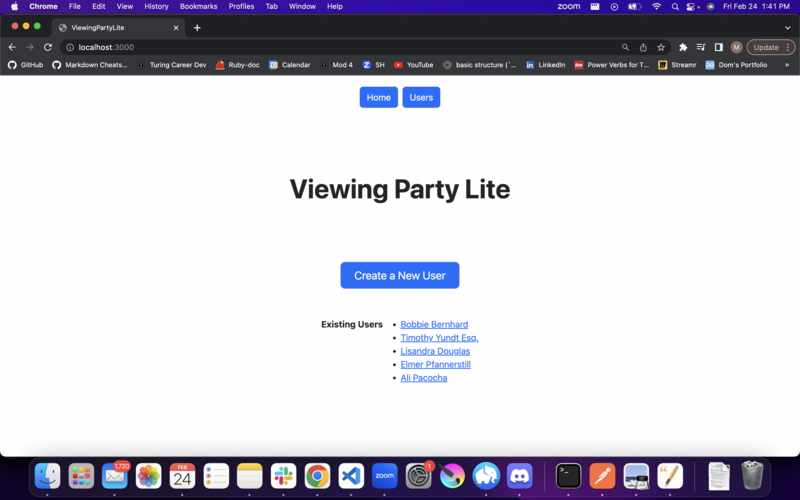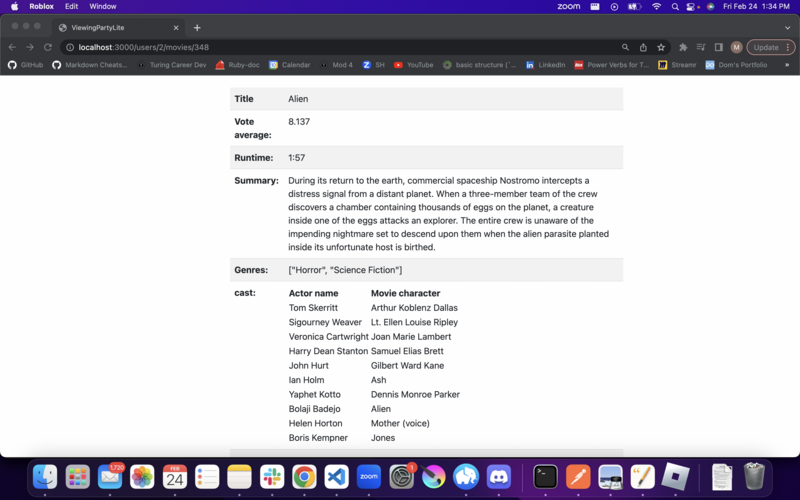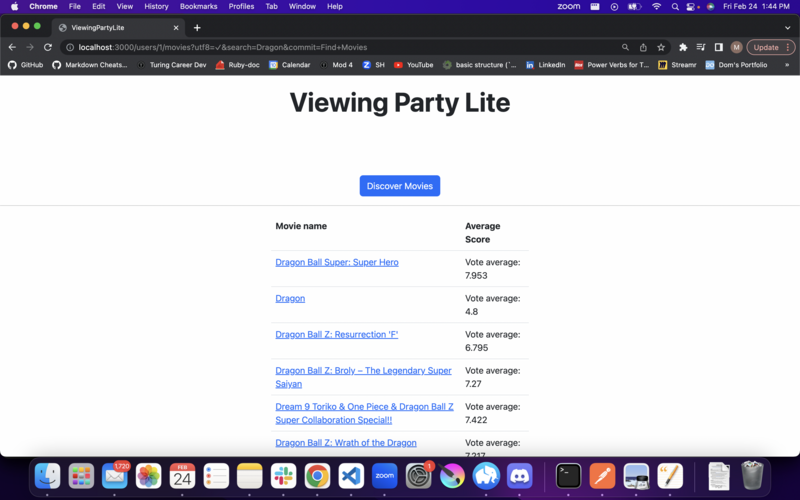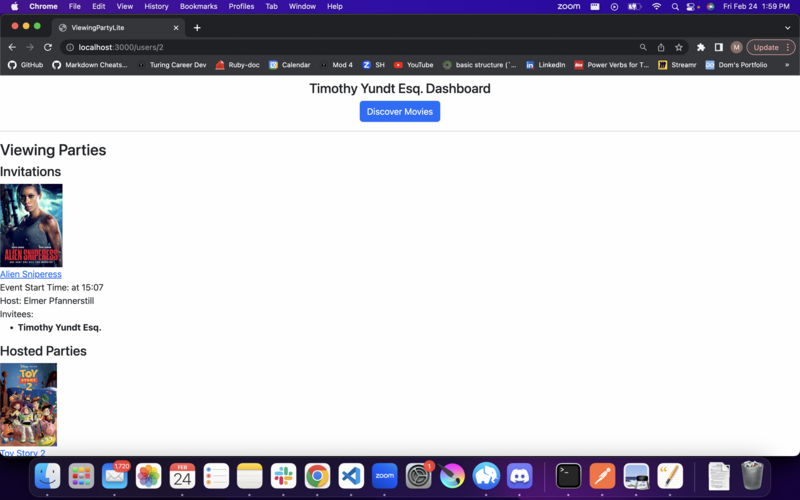About me
Taking a vision and bringing it to life has always driven me to do my best, whether it's a hobby or work. I've dabbled in endeavors such as animation, video editing, and game development; the list goes on, and each time I've always enjoyed the process. Web development has been no exception. Due to unfortunate circumstances concerning the COVID-19 pandemic, I put a hold on my biology degree at Colorado State University and decided to explore other avenues. After mulling over my strengths, I settled on learning web development at Turing, and it's one of the best decisions I've ever made. It was challenging, yet I was producing applications that I was truly proud of, even if they were small in the grand scheme of things. Everything is a step towards something bigger, and I want to continue growing beyond what Turing has given me. I'm eager to learn new technologies, new languages, new frameworks, and become a successful full stack engineer that can give back to new developers like the Turing community gave to me.
Preferred locations
- Denver, CO
Previous industries
None specifiedSkills
Currently learning
Projects
Streamr
Streamr
Tools Used
Streamr is an application made to help users exchange and manage TV show recommendations by creating a space where users can make direct recommendations to other users, browse through TV shows, see the details of a show such as streaming availability, and save those shows to a watchlist for later.
This project's goal was to synthesize the knowledge accumulated over the course of the Turing web development program in order to produce a complete web application from a student-led project idea, focusing on Service-Oriented Architecture with separate front-end and back-end teams. Communication was crucial as each team was composed of students who were trained solely for their respective side of the stack. As part of the project requirements, a stretch tech had to be learned and incorporated into both ends of the application. GraphQL was the chosen stretch tech for this application. Agile methodologies were also implemented to manage the project during the two-week time period given to complete the Minimum Viable Product.
This project was completed over the course of two weeks by three front-end students and four back-end students.
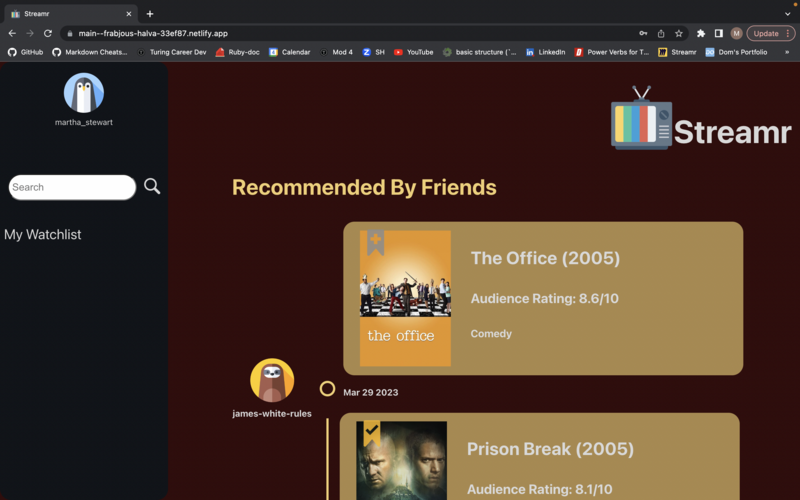

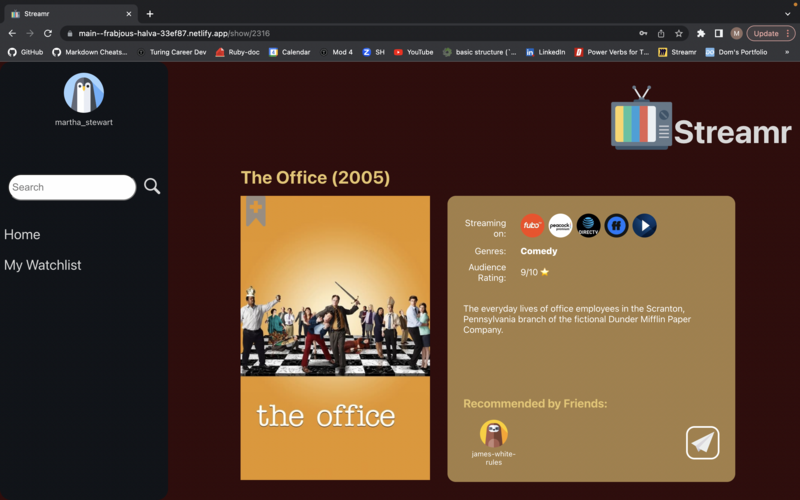
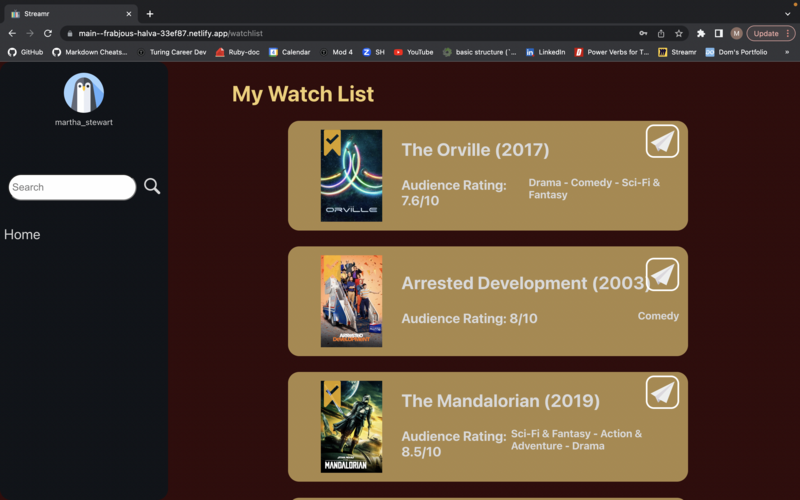
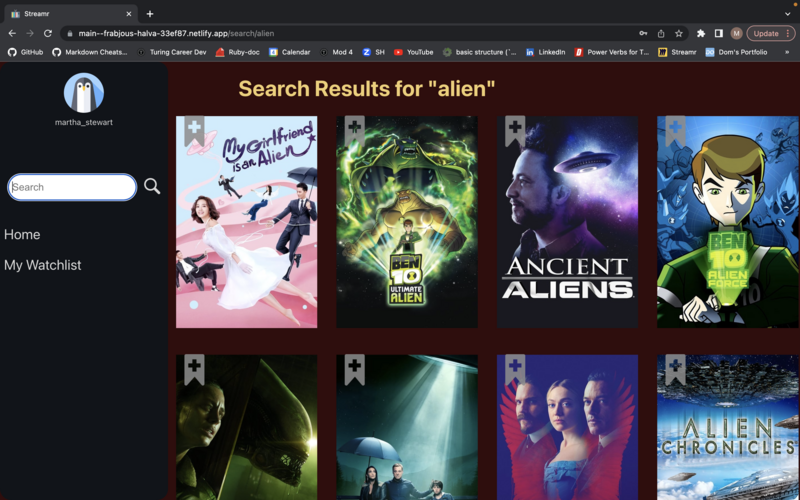
EpiTrac
EpiTrac
Tools Used
A service-oriented architecture application with front end and back end services, designed to present epidemiological data by state in a more accessible manner via an interactive map.
When a state pin is clicked, the area below the map will update with disease case numbers gathered from the National Notifiable Diseases Surveillance System (NNDS) API. Disease cases are sorted by number of cases in descending order, making it easier for the user to discern the most prevalent diseases in a state. When a disease name is clicked, the user is redirected to a basic description of the disease along with links to the disease information page on the CDC website. Users can login with their Google account and set their home state, which will cause the landing page to auto-populate with the info for that state while logged in. Users can find academic articles for each disease listed and save the articles to their profile.
This project was completed by five back-end development students over the course of ten days.
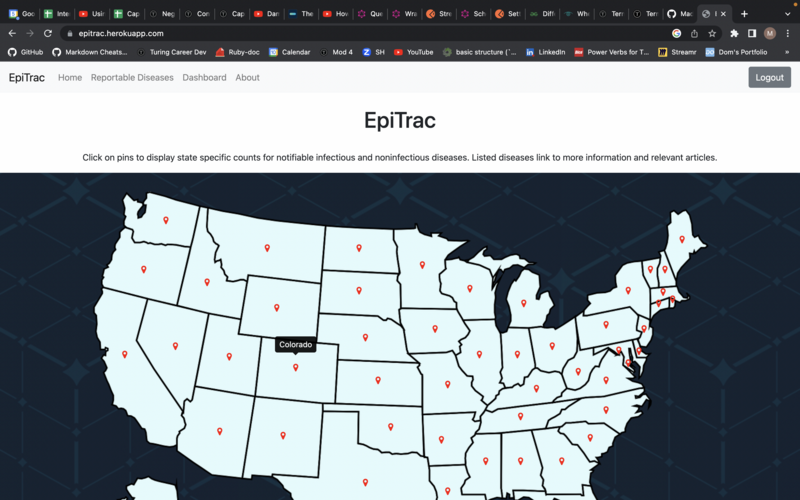

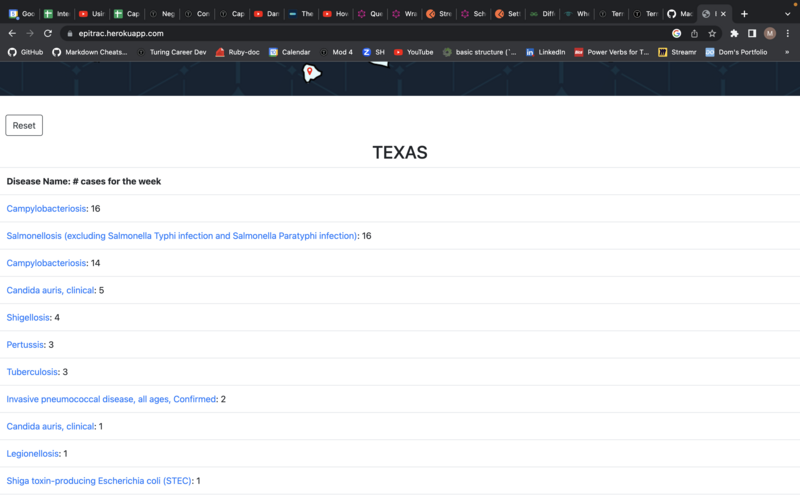
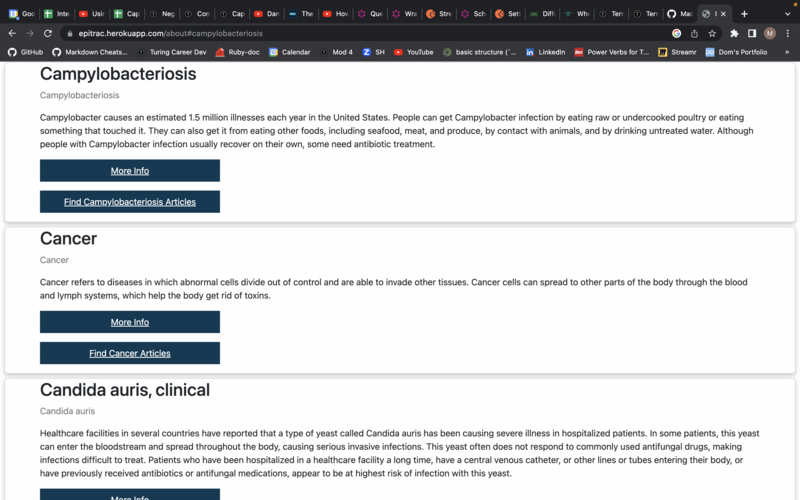
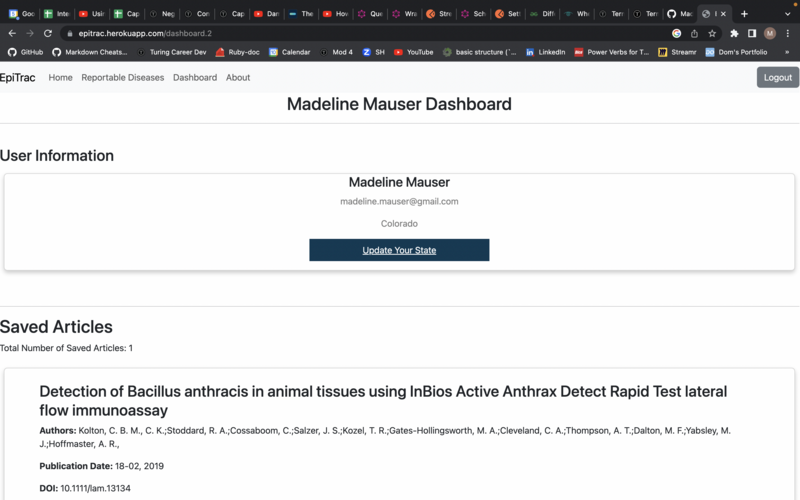
Viewing Party Lite
Viewing Party Lite
Tools Used
Viewing Party Lite is a monolithic web application built for browsing movies and creating "watch parties" to which existing users can be invited. It was completed as a pair project in five days.
The goal of this project was to learn how to consume an external API into an application with CRUD functionality. The application's current functionality is limited due to project guidelines. Currently, users can:
- Create a user profile
- Search for movies
- View top rated movies
- View movie details
- Create a viewing party for a movie
- Invite other users to a viewing party
- View parties that the user is invited to or hosting in the user dashboard.
Implementation of authentication and authorization is planned for the future.
